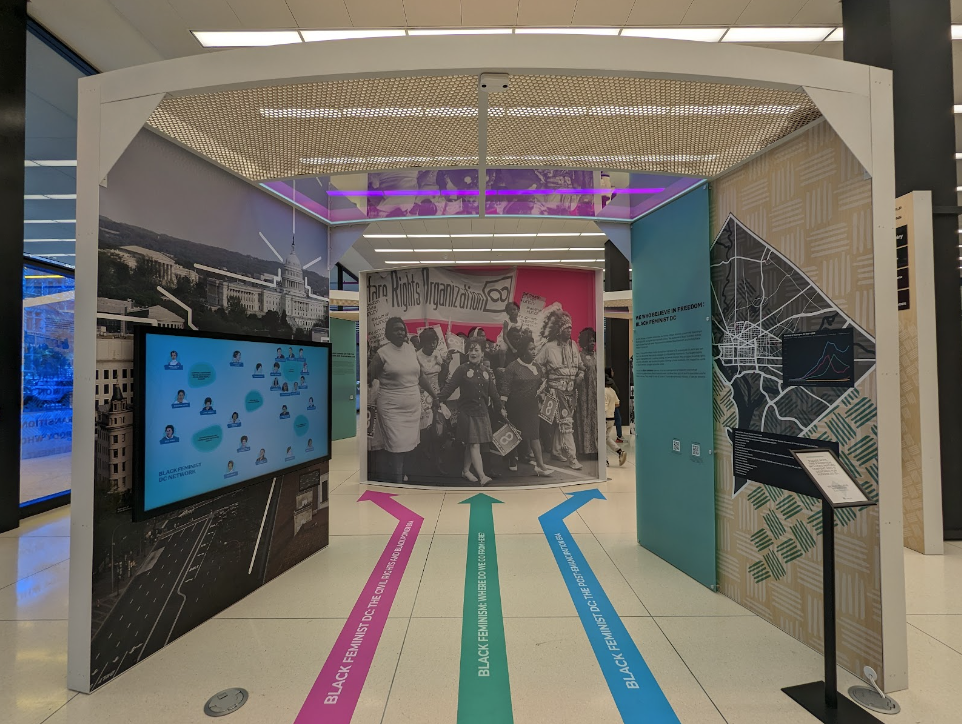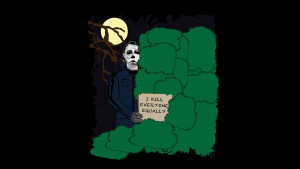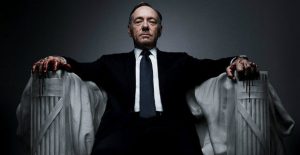The roots of Black feminism run deep in the history of D.C. For over a century, the District’s Black feminists have made momentous contributions to civil rights activism as writers, organizers, artists, protestors, musicians, and theorists—but their pioneering work is oft-neglected in national discussions about feminism and antiracism. The Martin Luther King Jr. Memorial Library’s new exhibit, “We Who Believe in Freedom: Black Feminist D.C.,” aims to elevate the stories of Black women in D.C. who have fought against racism, patriarchy, classism and other interconnected systems of oppression. Curated by historians Dr. Sherie M. Randolph and Dr. Kendra Taira Field in partnership with the National Women’s History Museum, the exhibit will remain free to the public until September 15, 2024.
The exhibit’s historical exposition is meticulous but neither overwhelming nor inaccessible. Information panels use approachable and pithy language, while the art is engaging, elegant, and striking. It takes only an hour for visitors to thoroughly explore three eras of D.C.’s Black feminism: post-emancipation, Civil Rights and Black Power, and present day. The historical sections discuss major historical figures and artistic-intellectual trends in the movement, while the present-day section challenges visitors to contemplate the future of Black feminism and how they can contribute to its ongoing struggle.
In 1991, Kimberlé Crenshaw pioneered the theory of intersectionality, which, unlike race, sexuality, or gender-blind liberation philosophies, examines how individual identities interact and synthesize to create multiplex structures of privilege and oppression. This theory structures the exhibit, asking viewers to expand their ideas of what anti-racist and anti-sexist activism can look like. “One of the things that Black feminism really is valuable for is teaching us to be expansive in our political and social and cultural imagination by not focusing on aspects of Black women, but by focusing on Black women at the intersections of race, class, gender, sexuality, and other ways that we identify,” Dr. Ashley D. Farmer, Associate Professor of African and African Diaspora Studies at the University of Texas at Austin, said in a video accompanying the exhibit.
This idea of intersectionality is evident from the birth of Black feminism. “African American women confront ‘both a woman question and a race problem,’” the exhibit’s introduction reads, quoting influential Black scholar and activist Anna J. Cooper. Born into slavery in North Carolina and educated after emancipation at Oberlin College, Cooper laid the groundwork for Black feminist thought with her seminal essay collection A Voice From the South, a copy of which is displayed below her portrait. Published in 1892, the work is a trenchant critique of white female racism and Black male sexism, asserting that racial and gender equality cannot be achieved without the education and empowerment of Black girls and women.
In the same year, Cooper founded the Colored Women’s League in D.C. alongside Mary Church Terrell, another Black feminist who served as the first president of the National Association of Colored Women. Cooper and Terrell’s portraits hang side by side, a symbolic nod to the many years they fought alongside each other. Terrell remained politically active throughout her life; in 1953, at 83 years old, she led the protests that impelled the Supreme Court to end the segregation of D.C.’s dining facilities.
Just a few steps away is a collage of Black feminists associated with Howard University and the S Street Salon, a popular gathering spot for Black writers during the interwar period. Frequented by the likes of Zora Neale Hurston and Angelina Weld Grimké, the Salon served as a nexus of creativity and community for Black feminists and amplified their calls for gender and racial justice. A larger-than-life vignette depicts the venue’s host, poet and playwright Georgia Douglas Johnson, as she gazes into the distance.
Around the corner, visitors are welcomed to the Civil Rights and Black Power section with a lavish collage of D.C. Civil Rights leaders Pauli Murray and Eleanor Holmes Norton. Both trained as lawyers, Murray and Norton fought tenaciously to end segregation and gender-based discrimination. Murray coined the term “Jane Crow” to describe the uniquely racialized and gendered form of oppression that Black women faced under segregation, while Norton, a longtime advocate of reproductive rights, continues her work today serving as D.C.’s delegate to the House of Representatives.
D.C.-based a cappella group Sweet Honey in the Rock is featured on an adjacent panel. Founded in 1973 by Bernice Johnson Reagon, who also established SNCC’s Freedom Singers, their music centers on themes of political struggle, faith, and liberation. The boldly-printed lyrics of “Ella’s Song,” referencing prodigious Civil Rights activist Ella Baker, impress deeply: “We who believe in freedom cannot rest. We who believe in freedom cannot rest until it comes.”
The final display of the Civil Rights section features two collages, the first of which depicts reproductive rights activist Mary Treadwell and D.C. Black Panther Party organizer Nkenge Touré. Both women were key leaders of radical action during the 1970s. Treadwell founded the community organization Pride, Inc. alongside Marion Barry, who later became D.C.’s mayor, to help Black youth find work. In 1975, she testified before Congress to defend Roe v. Wade against backlash, arguing that Black liberation could not be achieved without protecting Black women’s reproductive rights.
To Treadwell’s right is a portrait of Touré with a hand resting on her chin, immersed in thought. Touré suffered racism throughout her childhood in Baltimore—police maced and arrested her at the age of 17 for organizing an antiracism protest at her majority-white high school, and Touré was expelled soon after. Unfazed, she continued to organize and fight for social justice, and was recruited by the D.C. Black Panther Party to lead its community health and education initiatives in 1971. She also founded D.C.’s popular Education for Liberation Bookstore and became a leader of the D.C. Rape Crisis Center (DCRCC), motivated by her own experiences as a survivor. After leaving DCRCC, Touré hosted “In Our Voices,” a weekly feminist show aired on D.C. radio station WPFW until 2018.
Across from Touré is a vibrant collage of Loretta Ross, a friend of Touré and the exhibit’s last subject. Ross arrived in D.C. as a teenage mother with few connections. She soon took up the causes of Black nationalism and socialism while pursuing an education at Howard, but as a survivor of sexual assault, recognized the unique challenges Black women faced in their struggle for rights and representation. In college, she became the subject of national attention after winning a lawsuit against an IUD manufacturer whose defective product caused her to become sterile. Ross joined the DCRCC upon graduation and fought for comprehensive reproductive freedoms. These freedoms are defined not only as the right to an abortion, but also as the right to quality healthcare, low-risk birth control methods, affordable housing, and safety from police brutality—what Ross termed “Reproductive Justice.”
As pioneers of intersectional feminism, Treadwell, Touré, and Ross built upon the work of D.C.’s first generation of Black feminists and helped refine Black feminism’s vision for a just society. Their emphasis on identifying and combating oppression at the confluence of gender, race, sexuality, and economic status revolutionized contemporary theories of social justice, and through their immensely impactful political organizing, they have left an indelible mark on the national Black feminist movement.
The exhibit’s final section, a collection of provocative pieces that engage with the future of Black feminism, is an empowering farewell to its visitors. In the center of the exhibit is an interactive display that invites viewers to create their own Black feminist manifestos, encouraging them to reflect upon the revolutionary work of Black feminism and their personal experiences/beliefs. A set of adjustable rollers allow visitors to fill in preset prompts. When the Voice visited the exhibit, the last visitor had written, “We remember segregation. We will not rest until economic inequality and gender inequality are destroyed. We want freedom and liberation.”
The MLK Library’s exhibit weaves an intricate, illuminating tapestry of D.C.’s Black feminist history, and it leaves a profound impression. The words of Mary Church Terrell, printed on the museum’s exterior windows in lustrous, ineffaceable white, reverberate through the city streets:
“I will not shrink from undertaking what seems wise and good, because I labor under the double handicap of race and sex; but, striving to preserve a calm mind with a courageous, cheerful spirit, barring bitterness from my heart, I will struggle all the more earnestly to reach the goal.” — Mary Church Terrell, 1915





